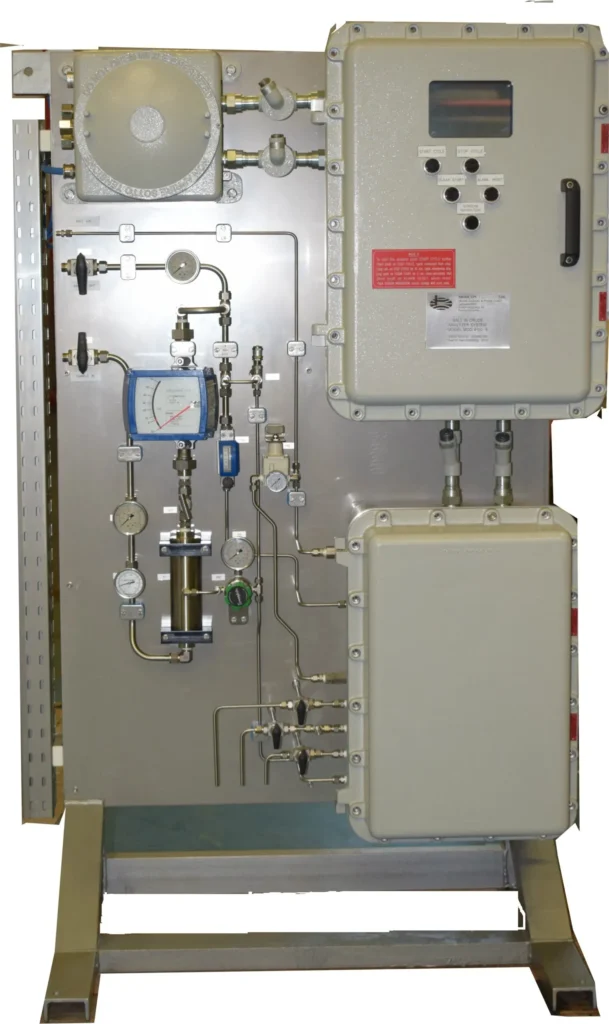Efficient refinery operations begin long before crude oil enters the distillation tower. One of the most critical challenges refineries faces is managing salt content in crude oil—a factor that directly impacts corrosion, energy consumption, and equipment longevity.
At MODCON Systems, we understand that effective salt control is not just a maintenance issue—it’s a key driver of operational efficiency and profitability.
The Hidden Threat: Salts in Crude Oil
Crude oil naturally contains salts—primarily sodium chloride (NaCl), calcium chloride (CaCl₂), and magnesium chloride (MgCl₂)—dissolved in the water emulsified within the oil.
If untreated, these salts can cause:
- Severe corrosion of heat exchangers, pipelines, and distillation units.
- Clogging and fouling of refinery equipment.
- Increased ash and scaling, reducing process efficiency.
During processing, magnesium and calcium chlorides can hydrolyze to form hydrogen chloride (HCl), which accelerates corrosion and damages refinery infrastructure. Over time, this leads to higher maintenance costs, reduced throughput, and unplanned shutdowns.
Desalting: The First Line of Defense
Desalting is a crucial pretreatment step that removes salts and water from crude oil before refining. The process typically involves:
- De-emulsification – Breaking the water-crude emulsion.
- Electric and Chemical Treatment – Using electrical fields and demulsifiers to separate water from oil.
- Water Washing – Removing salts through controlled washing.
- Phase Separation – Settling and removing the water phase containing dissolved salts.
When properly managed, desalting reduces salt content to below 5–10 pounds per thousand barrels (PTB), protecting refinery equipment and ensuring stable, efficient operations.
Why Continuous Monitoring Matters
Even with effective desalting, real-time monitoring of salt levels is essential to maintain optimal process conditions. Traditional lab-based methods such as ASTM D3230-19 measure salt indirectly via conductivity, but these methods can’t deliver the immediate feedback refineries need for process optimization.
Modern analyzers, such as MODCON’s MOD 4100-S, close that gap—providing on-line, real-time data to continuously track salt concentration throughout the entire crude oil chain.
Introducing the MOD 4100-S: Real-Time Salt-in-Crude Analysis
The MOD 4100-S Salt in Crude Oil Analyzer represents a major advancement in refinery process control. Designed for rugged industrial conditions, it measures salt content on-line and in real time, allowing operators to fine-tune desalting conditions and maximize efficiency.
Key Benefits of the MOD 4100-S
- Provides on-line salt data from wellhead to desalter outlet.
- Indicates desalter efficiency in real time.
- Enables on-line optimization of desalter process parameters.
- Reduces water, chemical, and energy consumption.
- Prevents corrosion, fouling, and plugging in pipelines and equipment.
- Fully integrated sampling and conditioning system ensures accurate, stable readings.
- ATEX ExD approved, with no analyzer shelter required.
These capabilities allow refineries to maintain salt levels within safe limits, prevent formation of amine chlorides, and operate at lower distillation temperatures—all of which enhance naphtha yield and refining margins.
The Economic Advantage
Uncontrolled salt levels can lead to millions in annual losses due to corrosion damage, equipment downtime, and energy inefficiencies. Investing in modern desalting control and salt analyzers not only safeguards assets but also delivers measurable ROI through reduced maintenance and improved throughput.
With the MOD 4100-S, refineries can achieve:
- Reduced maintenance shutdowns
- Extended equipment lifespan
- Improved process efficiency
- Higher profitability and lower OPEX
Driving Refinery Performance Forward
Managing salt content in crude oil is no longer a reactive task—it’s a strategic opportunity. With advanced desalting systems and real-time analytical solutions like the MOD 4100-S, refineries can ensure reliable operation, minimize corrosion risks, and achieve sustainable efficiency gains.


